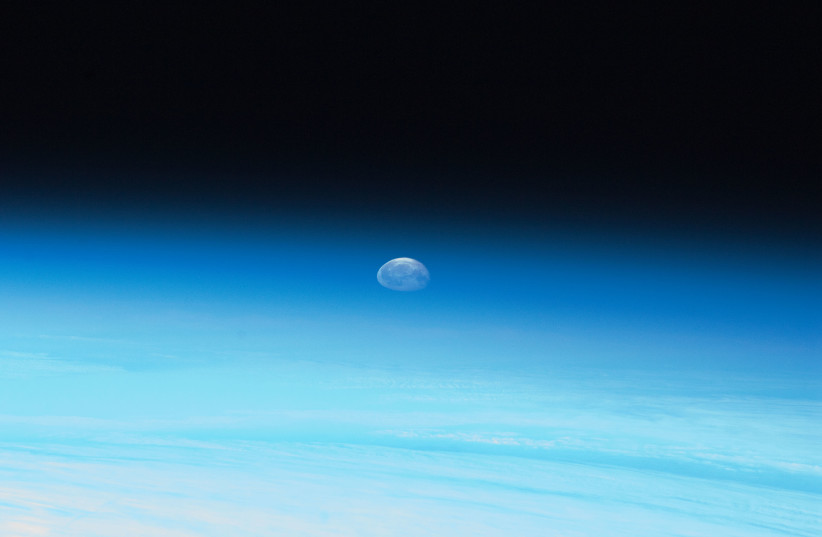What if life figured out how to use oxygen before it was freely available?
Did the production of oxygen coincide with the "Great Oxygenation Event", or did living organisms have access to oxygen even before that event?
By Sarah Chemla, Jerusalem Post, February 26, 2021

Moon and Earth’s Atmosphere (photo credit: NASA)
Around 2.5 billion years ago, our planet experienced what was possibly the greatest change in its history: molecular oxygen suddenly went from nonexistent to becoming freely available everywhere.
While
it is a fact that the “great oxygenation event” (GOE) occurred,
allowing oxygen-using organisms – also called the "respirators" – to
evolve, one question still remains. This is what Prof. Dan Tawfik of
the Weizmann Institute of Science’s Biomolecular Sciences Department set
out resolve.
The question being whether this event actually radically changed the way oxygen-using organisms breathed - or were they using oxygen at the time already using free oxygen, just at lower levels? Did the production of oxygen coincide with the GOE, or did living organisms have access to oxygen even before that event?
On
one hand, according to the study, molecular oxygen would not have been
available before the GOE, as the chemistry of the atmosphere and oceans
prior to that time would have ensured that any oxygen released by
photosynthesis would have immediately reacted chemically.
But
on another hand, however, some of the oxygen produced by the
photosynthetic microorganisms may have remained free long enough for
non-photosynthetic organisms to snap it up for their own use, even
before the GOE.
Part of Tawfik’s research
team, Jagoda Jabłońska thought that focusing on the protein evolution
could help resolve the issueThat is, using methods of tracing how and
when various proteins have evolved, she and Tawfik might find out when
living organisms began to process oxygen.
Such
phylogenetic trees are widely used to unravel the history of species,
or human families, but also of protein families, and Jabłońska decided
to use a similar approach to unearth the evolution of oxygen-based
enzymes.
“Of
course, it was far from simple,” said Tawfik. “Genes can be lost in some
organisms, giving the impression they evolved later in members in which
they held on. And microorganisms share genes horizontally, messing up
the phylogenetic trees and leading to an overestimation of the enzyme’s
age. We had to correct for the latter, especially.”
The phylogenetic trees the researchers ultimately obtained showed a
burst of oxygen-based enzyme evolution about 3 billion years ago –
something around half a billion years before the GOE.
Examining
this time frame further, the scientists found that rather than
coinciding with the takeover of atmospheric oxygen, this burst dated to
the time that bacteria left the oceans and began to colonize the land. A
few oxygen-using enzymes could be traced back even farther.
"This
confirms the hypothesis that oxygen appeared and persisted in the
biosphere well before the GOE," said Tawfik. "It took time to achieve
the higher GOE level, but by then oxygen was widely known in the
biosphere.”
If
oxygen use had coincided with the GOE, the enzymes that use it would
have evolved later, so the findings supported the scenario in which
oxygen was already known to many life forms by the time the GOE took
place.
“Our
research presents a completely new means of dating oxygen emergence, and
one that helps us understand how life as we know it now evolved.”
😇😇😇😇😇😇😇😇😇😇😇😇😇😇😇😇😇😇😇😇😇😇😇😇😇😇
Neander-Troll says :Be sure to recommend and follow Chucks " Life of Earth " Blog at:
Neander-Troll says :Be sure to recommend and follow Chucks
" Life of Earth " Blog at:


No comments:
Post a Comment
Stick to the subject, NO religion, or Party politics